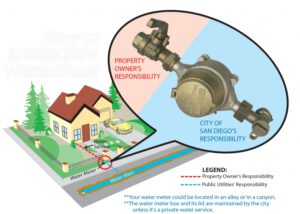How Does Plumbing Work in a Residential Setting?
Plumbing Work in a Residential Setting
Many people don’t understand how plumbing works in a residential setting. This can lead to frustration when something goes wrong. It’s also difficult for plumbers to diagnose and fix problems when they don’t understand the system.
The plumbing system in a home consists of two separate subsystems: the supply and drainage systems. The supply system brings fresh water in, while the drainage system takes wastewater out. Each system has its own set of pipes, but they do share some links. For example, a sink drain acts as a bridge between the supply and drainage systems. These bridges are supposed to keep the systems from minging, which would cause contamination and dangerous health issues. However, these bridges are often clogged by hair, soap scum, or other debris.
A residential plumbing system also includes shutoff valves for the entire house and for specific areas like bathrooms. This lets homeowners turn off the water flow if they’re fixing a problem. The system also uses a meter to track water usage, so residents can see how much they’re using. The main function of a residential plumbing system is to provide fresh, clean water to homes. It does this by transporting water through a series of pipes to sinks, toilets, showers, and other fixtures.

How Does Plumbing Work in a Residential Setting?
Offices and workspaces have similar plumbing systems to residential buildings, but they tend to be larger in scale. The system might have to service many more people at once, so there will be more demand on the pipes and connections. The system might also need to supply more appliances, like refrigerators, washing machines, and dishwashers.
If the plumbing system in a commercial building is designed correctly, it will be able to handle the demands placed on it. The contractors installing the system will have to consider the maximum capacity of the building, as well as how frequently it will be used. This will help them determine how big the piping needs to be and whether or not the system can support it at full capacity.
Besides thinking about capacity, it’s important for contractors to think about the needs of the people who will be using the system. This will help them design a system that will be easy for workers and customers to use, as well as meet any health or safety regulations. For example, it’s important for contractors to consider what types of chemicals or materials are allowed in the system, so they don’t damage equipment or create toxic fumes.
Many plumbing problems are caused by improper or careless use. This is especially true in large commercial settings, where workers and customers might be more likely to flush items down the drains that they shouldn’t be. The best way to avoid these problems is to educate employees and customers on what can and cannot go down the drains. This can help reduce the risk of clogs, overflows, and other problems that could cost the business or customers money in repairs.